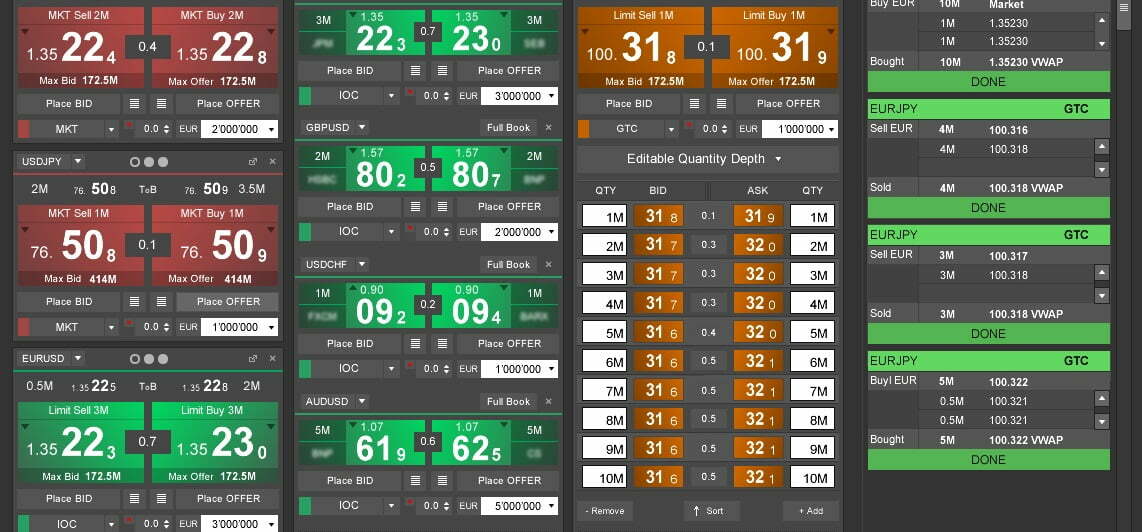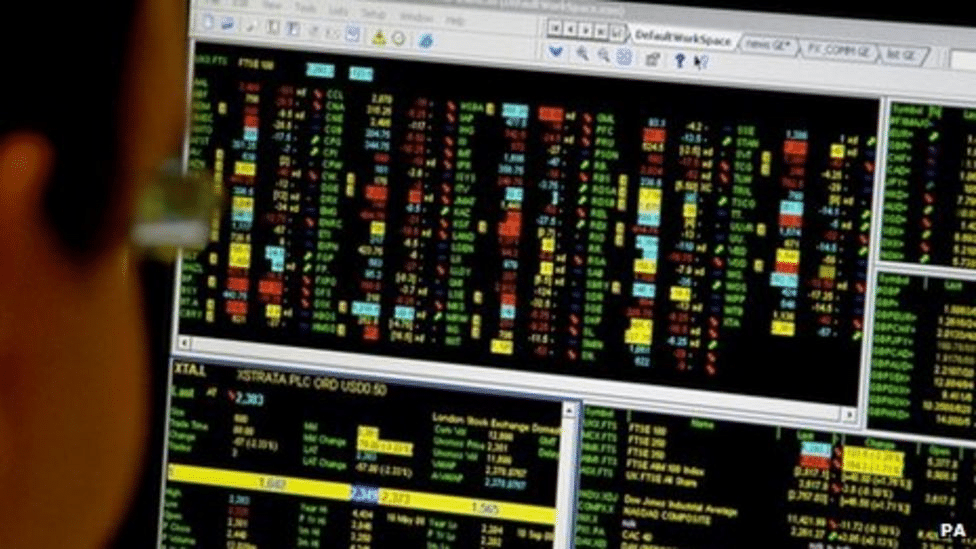An FX Aggregator, also known as the Foreign Exchange Aggregator, is a Forex trading software that combines (aggregates) all the liquidity from different liquidity providers in a single view.
The aggregators offer various order types, currencies, and tiered pricing. It should be pointed out that nowadays Forex brokers are very interested in acquiring the services of Forex aggregators as they can provide lightening fast execution resulting in a union that yields outstanding results.
In order to understand FX aggregators, we need to understand how the forex market is structured (market microstructure).
Forex market microstructure
Unlike in markets like equities or futures, there is no centralized exchange, hence there are no “unique” prices for the same asset. In fact, there is no single price for a given currency at any time, which means quotes from different currency dealers vary.
This could be confusing at first, but after some thought, it becomes very easy to understand.
In the forex market, we have different participants: Banks, ECNs, Liquidity providers (LPs), and traders.
Being this an OTC market (Over The Counter), means that there will be many different providers for the same pair, hence, different prices. So, depending on which provider you are looking at, you will see a different price.
How high-speed traders could take advantage
A new study has found that high-frequency traders need to react to new information within milliseconds for it to affect prices.
New information can come in the form of scheduled macroeconomic announcements as well as unexpected election results, referendums, or other political movements.
Many studies have shown that the speed of information in prices has been accelerated by the use of high-frequency traders, so the academically challenged question often posed is whether high-frequency traders provide or consume liquidity.
FX Aggregator
Having this situation, traders need to have the necessary tools to have a better outlook on the fx market.
Here is when FX Aggregator comes to play. It reads currency prices from all sources on all the different tiers, building an internal and centralized limit order book. This way, traders can satisfy the needs for fast execution and effective order routing as per specific rules.
Why do I need an FX aggregator:
· Minimize market impact when trading big sizes.
· Minimizing slippages.
· Being able to execute through smart order routers with better price discovery.
· Lowering trading costs, having access to the best spreads at any specific moment.
· Risk diversification with different sources
Performance
Collecting prices on many tiers from different sources it is challenging but is not rocket science.
But it could become a problem if besides getting the prices from different sources and aggregating them, you also are analyzing them and sending orders back, all within microseconds. That’s challenging! You must pay special attention to how you design your aggregator and how you architect it.
As of last, I wrote about architecting low latency systems for trading here: http://www.sissoftwarefactory.com/blog/how-do-i-design-high-frequency-trading-systems-and-its-architecture-part-i/

More content like this
If you liked this content or found it interesting, it will mean a lot if you share it with your network. That will allow us to write more about these interesting topics.
You can find more content like this in our blog.

What do we do?
We specialize in electronic trading software technology, helping wall-street institutions to stay up-to-speed with their trading technology.
Check out our website here.



